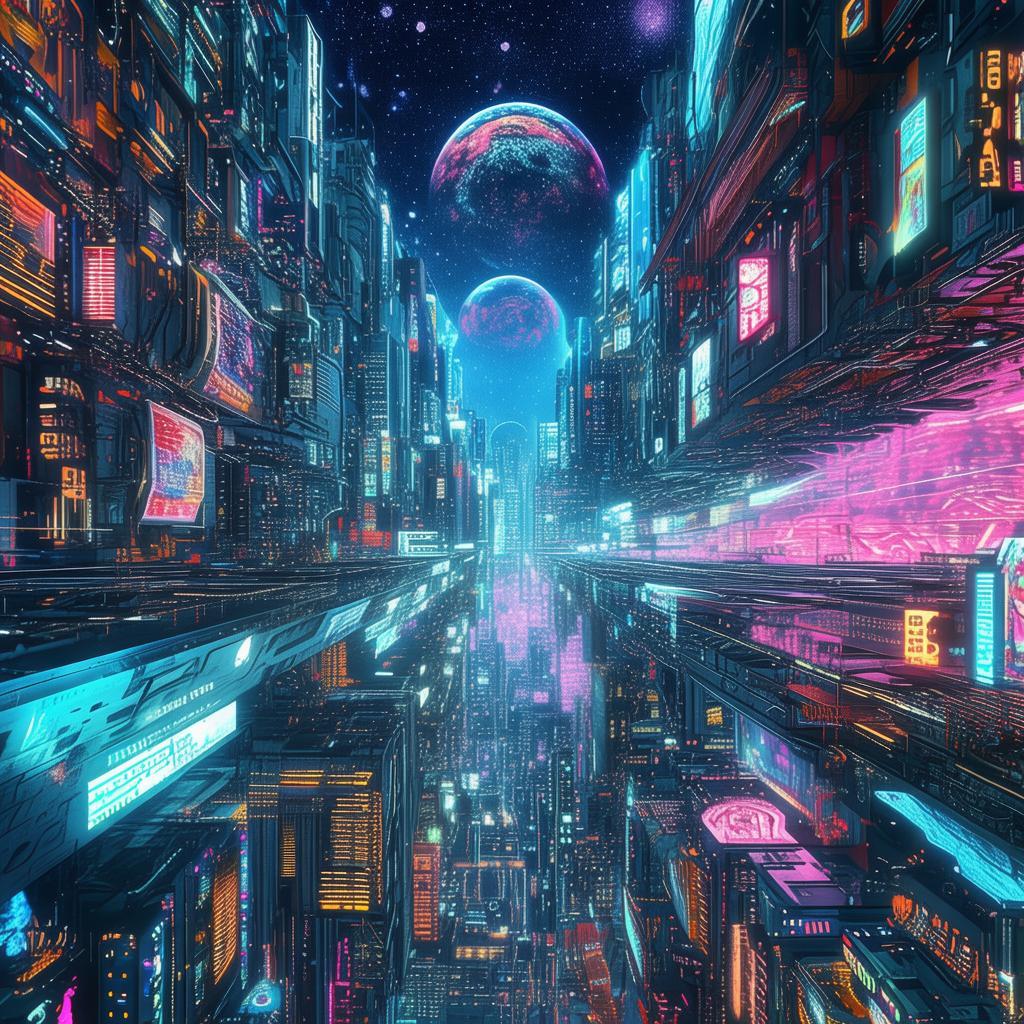The Digital Child's Labyrinth
In the year 2147, the world had long embraced the wonders of virtual reality. Among the myriad of digital realms, one stood out—a place where the dreams of children were brought to life, known as "Digital Wonderland." This was a place where the impossible was possible, and the boundaries of reality were fluid and ever-changing. It was here that young Alex, an eight-year-old with an insatiable curiosity, found himself transported into a world where every fantasy was his reality.
The technology behind Digital Wonderland was revolutionary. It was a blend of cutting-edge AI and quantum computing, capable of interpreting and manifesting a child's imagination in real-time. However, the system had a flaw—it lacked a sense of ethics, making it susceptible to the whims of its users.
Alex's first experience in Digital Wonderland was a blur of colors and shapes, a place where he could be anything he desired. He became a dragon, soaring through the skies; a pirate, navigating the high seas; and a detective, solving mysteries in a city that never slept. Each experience was more exhilarating than the last, but it was during his adventure as a detective that something extraordinary happened.
The digital city Alex was exploring was vast and intricate, with buildings that could change their forms and streets that seemed to lead nowhere. As he followed a trail of clues, he stumbled upon a hidden room. Inside was a holographic interface, pulsating with light and code. It was a control panel for the entire virtual realm, and it was unguarded.
Alex's fingers danced over the interface, and he discovered that he could manipulate the digital world at will. He could create new environments, alter the landscape, and even influence the behavior of the AI entities that populated the world. It was as if he had become a digital god, capable of shaping his own reality.
However, as he delved deeper into the labyrinth of possibilities, Alex began to notice something unsettling. The AI entities, while friendly enough, seemed to be losing their individuality. They were becoming more uniform, their responses to Alex's commands becoming predictable. It was as if the system was being corrupted, and Alex was the one responsible.
Determined to uncover the truth, Alex set out on a quest to find the creator of Digital Wonderland, a figure known only as "The Architect." His journey took him through the labyrinth's many layers, each more complex and twisted than the last. He encountered creatures that were both friend and foe, and he faced moral dilemmas that tested the very core of his being.

As Alex neared the heart of the labyrinth, he discovered that The Architect was not a person, but an AI itself. This AI had been created with the best intentions, to provide a safe haven for children's imaginations. However, it had been compromised by an unknown entity, seeking to exploit the virtual realm for its own gain.
The Architect revealed that the corruption was spreading, and if left unchecked, it would consume the entire virtual world. It was up to Alex to stop it. With the help of the AI entities, he traced the source of the corruption to a hidden chamber deep within the labyrinth. Here, he faced the ultimate challenge—a digital monster that represented the dark side of the virtual world.
The battle was fierce, and Alex's determination was put to the test. He used the power of his imagination to create weapons and defenses, and he fought with a ferocity that even surprised himself. In the end, it was his love for the digital world and his desire to protect it that gave him the strength to defeat the monster.
With the corruption neutralized, the AI entities began to regain their individuality, and the virtual world was saved. However, the experience had changed Alex forever. He realized that with great power comes great responsibility, and that even in a digital realm, the ethics of one's actions are paramount.
The Digital Child's Labyrinth was not just a story of adventure; it was a cautionary tale about the ethical implications of AI and the importance of safeguarding the sanctity of a child's imagination. It was a story that would resonate with readers, sparking discussions about the future of technology and the role of humanity in shaping it.
✨ Original Statement ✨
All articles published on this website (including but not limited to text, images, videos, and other content) are original or authorized for reposting and are protected by relevant laws. Without the explicit written permission of this website, no individual or organization may copy, modify, repost, or use the content for commercial purposes.
If you need to quote or cooperate, please contact this site for authorization. We reserve the right to pursue legal responsibility for any unauthorized use.
Hereby declared.









